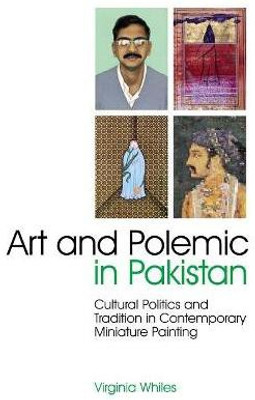Art and Polemic in Pakistan(English, Hardcover, Whiles Virginia)
Quick Overview
Product Price Comparison
Pakistan has become a central pivot in contemporary global politics: but what does Western world know of its culture? In recent decades, Pakistan has seen a revival and radical reinvention of miniature painting, a traditional artform which had originally flourished under the patronage of the Mughal Empire in the sixteenth century and which had declined under the colonial influence of the British. Miniature painting has become the major movement in Pakistani contemporary art, and international exhibitions have been enthusiastically received by the global art community. In this first detailed examination of the phenomenon of contemporary miniature painting in Pakistan, Virginia Whiles reveals how artists engage with and respond to underlying political, historical and cultural tensions. In contrast to India, where the miniature tradition is preserved only through its tourist industry of reproduction, miniature painting in Pakistan has broken free of its traditional cast and has become a medium for its artists to challenge the world around them. Although the paintings are rendered with ornate traditional technique, in content they provide a subtle, satirical treatment of serious issues: from religious and political fundamentalism to "McDonalization", from violence against women to nuclear warfare, from the pressure of Purdah to the machismo of lollywood film posters. Art and Polemic in Pakistan provides a fascinating insight into Pakistani responses to national and international issues through the medium of miniature painting, and over sixty paintings from artists based at the national College of Art in Lahore - the institute at the heart of the contemporary movement - are reproduced here in full colour. Whiles therefore sheds new light upon the links between art and culture politics, and between indigenous and global aesthetics, presenting an artform which challenges common Western assumptions about Asian art. About the Author Virginia Whiles trained as a painter, art historian and anthropologist. She has worked as a critic, curator, and lecturer in cultural studies for over 40 years in the UK., France and South Asia. She was invited to teach at the NCA in Lahore in 1999. Her research on South Asian contemporary art has concentrated on the miniature movement in Pakistan, about which she has written articles and curated exhibitions. Table of Contents Introduction: Miniature Manoeuvres: Performative knowledge┬Ā Global flows and the agency of artworks Performative reading Social, Political and Historical Formations Relating to Miniature Practice: Traditional and Identity Gender and patriarchy Militancy and fundamentalism Economics and globalization Everyday life Cameo 1: Mohammed Imran Qureshi Cameo 2: Aisha Khalid Miniature Practice: The miniature department Teachers and training Zahoor-ul-Akhlaq The present ustad: Bashir Ahmend Training Image and text Drawing exercises Wasli preparation Copying Pigments Brush work Time and theory Group X Experimental techniques Group O Inter-group tensions Miniature department exhibition Reflections Cameo 3: Nusra Latif Qureshi Cameo 4: Saira Wasim Imagining or Inventing the Tradition of Miniature Painting?: Patronage and patriarchal attitudes Tradition, orientalism and nationalism Discursive links The traditional art course The language debate Reflections Cameo 5: Khadim Ali Cameo 6: Hamra Abbas Miniature Practice and Aesthetics: Social and Visual, Local and Global: Four points of view Western art history and its shifts The post-colonial context Hybrid pedagogies, social aesthetics and constructed communitites┬Ā Indigenous aesthetics The Karkhana Project Phenomenology and corporeal aesthetics Sensorial or detached viewing Sacred and secular, popular and elitist Popular culture and the practice Audience and attitudes towards aesthetics Reflections Cameo 7: Ahsan Jamal Cameo 8: Ayesha Durrani Workshop and Studio Production: The Lahore workshop/school┬Ā Workshops in India Trading miniatures Contracts between workshop and studio production Cameo 9: Hasnat Mehmood The Global "Art-World": Discursive formations Diffusion Craftmanship as a valorised attribute Ethinicity as a market value Gender and globalisation Global reception Local reception Market and art-world patronage Private, State and Corporate patronage Reflections Conclusions: Tradition and identity Class and gender Political outlook Aesthetic issues Market and globalisation Performative subversion?.


